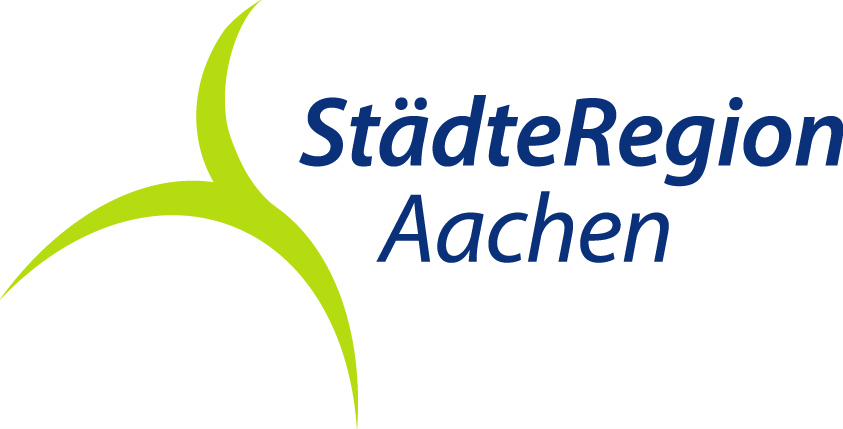Stahl-& Kupfer-Route - Über die Vennbahn zu Inde und Wurm
On the first section of the tour, we follow the historic Vennbahn route to Kornelimünster. In 1885, the first section of the High Fens Railway between Rothe Erde and Monschau was put into operation from Rothe-Erde station and later extended to Luxembourg. In the following years (late 19th century, early 20th century), this line supplied Rothe Erde, one of the largest steel-producing locations in Germany, with the raw materials (pig iron) required for steel production from Luxembourg. However, with the declining importance of the coal and steel industry in the Aachen region, the utilization of the Vennbahn fell steadily in recent decades, so that the line was finally completely closed and partially dismantled by 1989. The attempt to maintain the scenic Vennbahn as a museum railroad also failed due to a lack of utilization, so that today the Vennbahn is being developed in its entirety into one of the longest and most beautiful railroad cycle paths in Europe, which runs through three countries from Aachen to Luxembourg.
We leave the Vennbahn at the old railroad station in Kornelimünster. Here, we recommend taking a first break in the more than attractively designed Bahnhofsvision, which boasts many lovingly restored railroad relics and a beautiful beer garden(bahnhofsvision.de). The route then continues to the historic town center of Kornelimünster, which is absolutely worth seeing. Largely spared from the great wars, the town is still dominated by 17th and 18th century town houses. The historic town center from the Middle Ages has been almost completely preserved. The history of secular architecture in the Aachen region can nowhere be experienced in such a condensed form as in Kornelimünster.
From the historical cultural heritage, the next stop is "into the countryside". With the meandering Inde or Münsterbach, as the little river is called by locals at this point, as a constant companion, the route continues to Unterstolberg. The name Münsterbach is due to the fact that the Inde at this point is located on the territory of the former imperial abbey of Kornelimünster. Nature has been able to develop freely here for years, as most of the Inde valley at this point is a nature reserve. And if you are lucky, you might even get to see the legendary dwarves of the Tatternsteine near Büsbach. The steep walls of the Tatternsteine, which cover the entire valley slope, were exposed by the Inde River and consist of strongly rounded rock debris (boulders), known as conglomerate. It was formed from weathering debris that was transported from the Venn Massif by watercourses during the Upper Carboniferous period (around 340 million years ago). According to legend, small dwarves lived in the Tatternsteine, which is why they are still called dwarf stones today. It is said that these little fellows were busy mining during the day and helped out farmers and craftsmen with various tasks at night. An overhanging niche in the Tatternsteine is still regarded as a dwarf cave or dwarf dwelling (for more information on the dwarves of Tatternstein, visit: www.zinkhuetterhof.de).
Above the Tatternsteine you pass the three copper mills Bocks-, Hau and Buschmühle, which are representative of the centuries-old tradition of metal processing in Stolberg. Brass production was particularly widespread and these copper mills were built along the Münsterbach stream to process the brass.
Between junctions 98 and 87, a short detour to the Zinkhütter Hof is recommended. As a museum for the industrial, economic and social history of the Aachen region, the Zinkhütter Hof shows the development of one of the oldest industrial regions in Central Europe. The Zinkhütter Hof itself is a unique testimony to local industrial history. It was built as a glassworks at the beginning of the 19th century and has been rebuilt several times since then. It is rare to find a similarly preserved ensemble of buildings from the early phase of industrialization. To get to the Zinkhütter Hof, simply turn right on the L 221 (Cockerillstraße) and follow the road for a few hundred meters.
Continue through the Würselen forest in the direction of Aachen. The nature reserve of the "Saubachtal" in the forest area near Stolberg-Atsch is characterized by near-natural quarry and floodplain forest communities with numerous rare plants and animals. On the way to Aachen, we pass the beautifully situated Kalkofen estate. This castle, which is absolutely worth seeing, lies in the middle of a landscape conservation area with meadows, a small forest with a pond, stream and old trees. From there, the route leads directly across Europaplatz to the historic center of Aachen with its historic town hall and Aachen Cathedral. Take your time and stroll through the narrow streets and historic squares through almost 2000 years of Aachen's history before returning to the starting point at Rothe Erde station.
Highlights along the route
- Vennbahn
- Historic town center of Kornelimünster
- Tatternsteine
- Zinkhütter Hof
- Würselner Forest
- Kalkofen estate
- Historic old town of Aachen (with cathedral and historic town hall)





